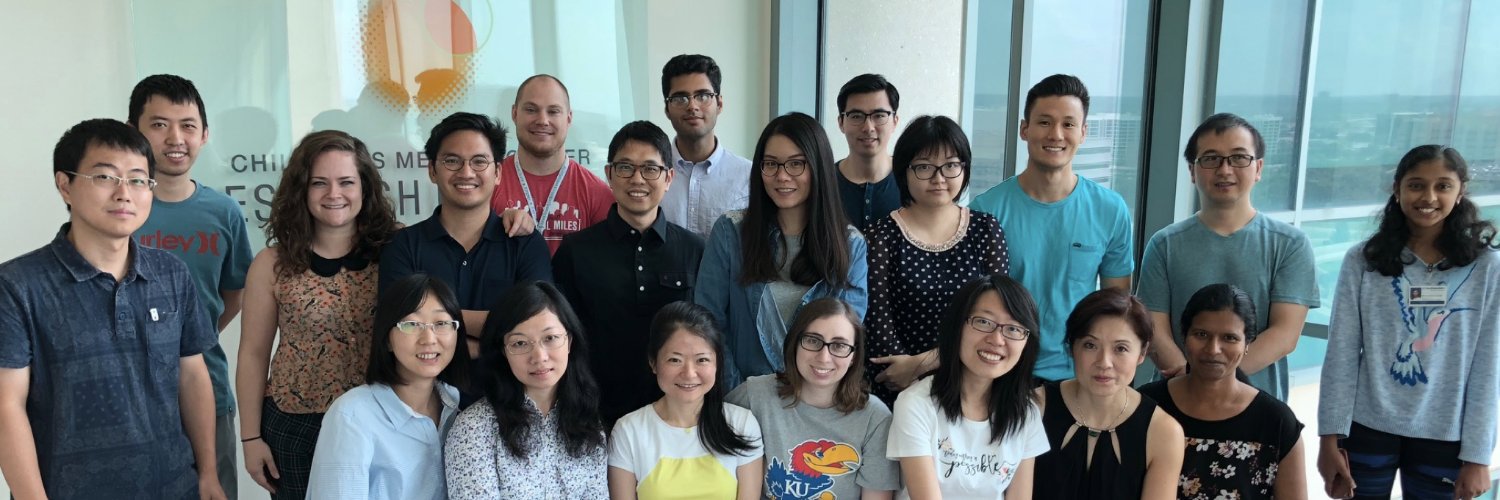
Hao Zhu Lab
@Zhu_Lab
Physician-scientist at @CRI_UTSW with a focus on #LiverCancer and organ regeneration.
Somatic mutations accumulate in “normal” non-cancerous tissues (blood, skin, liver). But why are mutant clones selected? Do they merely proliferate more, selfishly? Or can clones adapt to disease? Could they protect tissues? We shed light on this: authors.elsevier.com/a/1gua9L7PXmc1- 1/10
How do cells organize six feet of DNA in a tiny nucleus? @huabin_zhou, Ph.D., a postdoctoral fellow in the Rosen Lab, is uncovering the answer and just earned the 2025 Brown-Goldstein Award for his work on chromatin structure and biomolecular condensates. bit.ly/4lGmxzm
Fascinating & important @CellCellPress paper from @HelmholtzMunich Functional liver genomics identifies hepatokines promoting wasting in cancer cachexia cell.com/cell/fulltext/… A study that links deregulation of the hepatic circadian clock with peripheral tissue wasting.
Congratulations to Justin Engel, Ph.D. student, on receiving the 2025 Nominata Award—UTSW’s highest graduate student honor—for his groundbreaking research on chromothripsis and its role in tumor growth and therapy resistance. Learn more: bit.ly/4kvD8EL #UTSWEdu
Major congrats to First author Saloni Sinha who help to lead this project in the lab. We surprisingly found that hepatic zonation is very perturbed and altered and there is development of cells with aberrant gene expression during aging. #Liver #LiverDisease
Our latest paper is out in Hepatology. We found that aging causes loss of the unique organization and communication of the cells of the liver. It may inform the development of new therapies targeting age-associated liver dysfunction. news.weill.cornell.edu/news/2025/07/s…
Thank you @CR_AACR for selecting our story for the cover this month (art credit: Jose Cabrera)!
Always proud of my brilliant colleague, collaborator, friend @HsiehLab who received the prestigious bladder Ca research innovation @BladderCancerUS award! We keep working to advance the field! @fredhutch @HutchPresident @nicoleflemingmd @RahulBanerjeeMD @OncoAlert @FaltasLab
Our #SomaticGenomics platform follows a novel approach to uncovering links between genes and disease. This reveals a path to develop transformative therapeutics with intrinsically validated targets. Discover how our platform works: bit.ly/3AkWg71
🤯 in @CellCellPress An alternate receptor for adeno-associated viruses cell.com/cell/fulltext/… carboxypeptidase D [CPD] is an alternate AAV receptor- totally explains why AAV8 vectors are SO efficient at pancreatic exocrine cell transduction for CRISPR engineering.
ONLINE NOW: Two new somatic mutation studies in #liver disease from CRI's @Zhu_Lab: 🟠@JHepatology w/ postdoc Qiyu Zeng, Ph.D. journal-of-hepatology.eu/article/S0168-… 🟠@jclinicalinvest w/ grad student Greg Mannino jci.org/articles/view/… 🔖🧵 Hao's thread ⬇️
Intro to 2 new studies from my lab on somatic mutations in liver disease. 1st is about a mutated gene that leads to improved clone fitness and organismal health (CIDEB). The 2nd is about a mutated gene that leads to improved clone fitness but worse overall health (TBX3). 1/8
We are all somatic mutation mosaics. "There are trillions of cells in a human body and so the total number of somatic mutations acquired in a single individual may well exceed quadrillions, millions of times the size of the human genome." @Nature nature.com/articles/s4158…